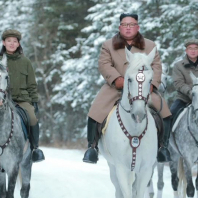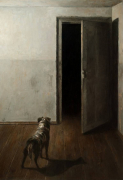
Что ни год, то Год Свиньи!
 uctopuockon_pyc — 26.12.2020
uctopuockon_pyc — 26.12.2020

"Ну, почему у нас всегда так? А? Ну, почему ни как по-людски? А? Вот у людей год Обезьяны - Год Обезьяны... год Собаки - Год Собаки... А у нас, что ни год - год Свиньи!" Задова Нина Марковна. А мы ответим на этот вопрос со всей партЕйной прямотой и открытостью. А потому, Нина Марковна, что во-первых, Свинья изокефальный символ Нового года во многих мировых культур-мультурах и законно присутствует на праздничной атрибутике: А во вторых, Нина Марковна, в Писании сказано: Не ищите праздника в календаре! А если есть, чем Новый год достойно встренуть, то и 2009 уже Год Кабана, и 2010 вдогон тоже Год Кабана, да любой год - Год Кабана:





The California Numismatist • Spring 2012.

| The Prosit Neujahr tokens is a continuation of a tradition seen on postcards dating back into the 1890s. | 1936 Bronze 23 mm
chimney sweep token by Joseph Prinz. The reverse is blank. The inscription “Ich bringe glück” means “I bring luck”. |
Beginning in the mid 1930’s, (maybe as early as 1934) the mint began issuing “Happy New Year” (Prosit Neujahr) tokens. These popular tokens often depict scenes from folktales, include lucky designs, and have inscriptions wishing one, “Happy New Year” as well as, “Good luck”. It is a fairly common practice, maybe less so now than in the past, to give one to friends and loved ones on Silvesterabend (New Years Eve). Many will carry a good luck token in pocket or purse throughout the year for that little bit of extra luck.
Early tokens were minted in bronze and silver and the reverses were blank or only had a date. They

| 1937 bronze 23mm New Year’s Babe. The reverse has been customized for Neues Wiener Journel (New Vienna Journal). The inscription “Viel Glück” means good luck. | 1955 0.900 Silver 23 mm token marked “HK” (possibly Hans Köttenstorfer). The obverse inscription, “Gute fahrt ins nuen jahr”, translates to, “Have a good journey in the new year”. The reverse translates to (top), “Everything should succeed”, and (bottom), “I will bring you luck.” | 1948 Aluminum 23 mm token by Adolf Ludwig Hofmann, chief engraver of the Austrian Mint who passed away in 1953. |
Early in 1938, Germany occupied Austria, and the National Socialists were quick to take over civil service jobs which included the mint, and consequently attempting to identify tokens from the Austrian Mint issued between 1939 and 1945 is problematic. Due to the scarcity of material needed for the war effort bronze was temporarily replaced with zinc. Zinc Austrian tokens from 1946-1947 are easy to acquire but being zinc means that really nice examples are diffi cult to locate. By 1948 bronze was again being used for tokens, and aluminum was also popular for a few years
The mint issued tokens each year and in some early years issued several designs. When a design was issued it was then available afterward to be used by customers. Up through 1959 the tokens were 23 mm in diameter; thereafter and through 2011 they are 21.5 mm. Token designs may exist in both 23 and 21.5 mm, as a regular or custom issue, in various metals, and with obvious variations in design all of which makes them a fun series for the collector. I know of at least 11 distinct major variations for 1949 and that seems to be the rule rather than the exception. They are poorly researched and new variations can be uncovered fairly easily. In later years, tokens were available in proof fi nish and since at least the 1960’s have been also issued in gold.
At the beginning in 1957 the hotel tokens were produced at the Austrian Mint, but starting in 1991 or 1992 the tokens came from the company Schwertner und Cie in Graz, Austria. I am unsure of the exact year as it happens the 1991 token is one of the very few I have been unable to collect. So 1990 and before is from the Austrian Mint; 1992 and after is from Schwertner. I really want a 1991! Schwertner tokens are an entirely different collectible series


I have a Sacher Hotel holiday card which I received from the hotel in May of 2010; it contains a 2010 token. Normally it would be mailed late in 2009 for the 2009 ChristmasNew Year holidays. I wasn’t on their mailing list (never stayed at the hotel as it was beyond budget), so I asked to purchase one and they graciously sent me one free with a lot of other literature. It is quite substantial and when closed measures around 7-5/8 inches square. I assume each year to be different but I have never found another…I would like to collect a few. It opens as a tri-fold. The front has a fl ap window which when opened reveals the token with the reverse visible showing the hotel monogram “S”. The token is not enclosed, but is glued to the card though it is easily removed. Having removed glue from a lot of Sacher Hotel tokens it is obvious that they used more powerful glues in the past. I

 |
1974 0.900 Silver 21.5
mm Engine # 13. The inscription, “Bin ich auch nur klein und rund bring doch glück ich jede stund”, roughly t ranslates as “Although I am small and round I will bring you luck all the year round”. The piece has the designer’s initial “B”. 1986 Silver-plated bronze 21.5 mm, Intercontinental Hotel in Vienna. Designer’s initials “BK”. The front depicts a rider and Lipizzaner stallion from the famous Spanish Riding School in Vienna. 2007 Proof 0.900 silver 21.5 mm token depicting “Froggy” fi shing for luck, and it looks like he made a fi ne catch! |
Editor’s Note: I happened to buy an unusual token on Ebay recently, and while trying to fi nd out a little bit about it on the Internet was lucky enough to stumble across www.AustrianCoins.com, a site maintained by Texan Dale Hallmark. I e-mailed him some specifi c questions, and in addition to answering them completely, imagine my delight when he agreed to my request to provide an article for TCN on this interesting subject as well. Hope you enjoyed it. If you get a chance drop by his Web site and take a peek around...GB
______________________________________
ИЗЧЁ больше Новогоднего настроения:
Мой оХРЮНительный год.
Прощай, Свинья!
|
|
</> |


 Обзоры, отзывы и жалобы на компании – все, что нужно знать об eto-razvod.ru и его преимуществах
Обзоры, отзывы и жалобы на компании – все, что нужно знать об eto-razvod.ru и его преимуществах  Отзыв посла в США – начало российского дипломатического контрнаступления
Отзыв посла в США – начало российского дипломатического контрнаступления  «Если вы не бывали в Свердловске»
«Если вы не бывали в Свердловске»  Алё, барышня, дайте Кремль! Кто говорит? Маск. И Трамп.
Алё, барышня, дайте Кремль! Кто говорит? Маск. И Трамп.  Василий Сталин
Василий Сталин  Актуальное
Актуальное  Брынза с укропом
Брынза с укропом  Италия ч.6
Италия ч.6  Новости мировой войны
Новости мировой войны 


